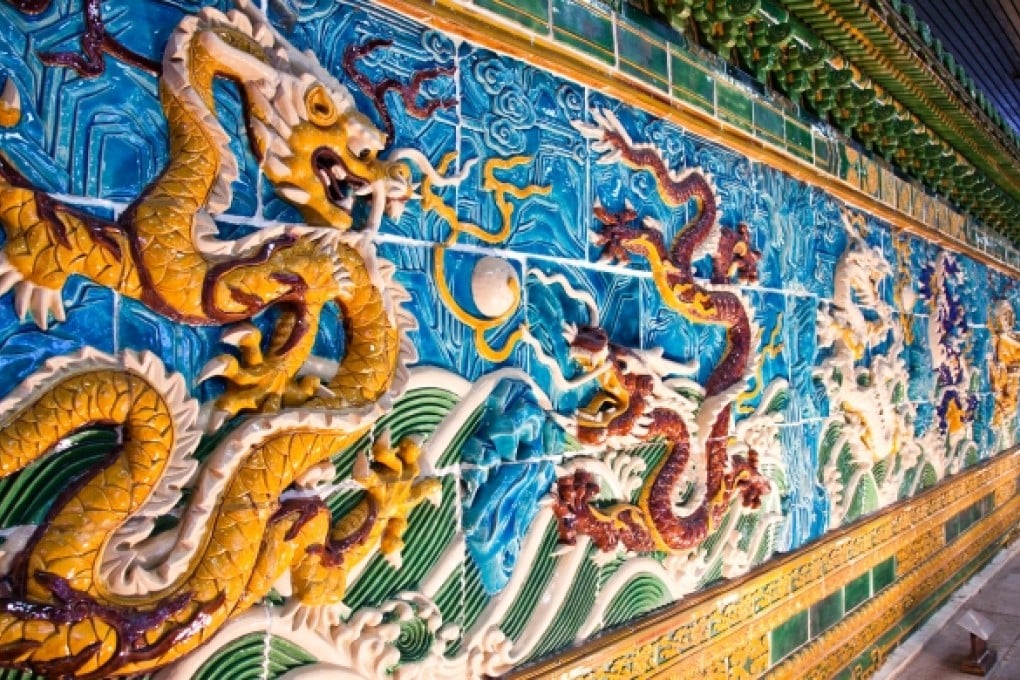Fall of the Wall
A valuable ceramic wall is destined for the storage shed. Grace Tsoi investigates why Hongkongers aren’t protesting the move.

The Nine Dragons Wall doesn’t match its surroundings. For decades the bright ceramic facade has sat on the ground level of the China Resources Building in Wan Chai, surrounded by gray-and-glass buildings. Though it’s only a replica of the 200-year-old original in Beijing, art and architecture experts say it is nonetheless a piece of art that deserving of recognition—and preservation. True, thousands of Hongkongers walk by it every day without noticing it or appreciating its history, but many say they are happy to see anything that adds color to a corporate neighborhood.
Now endangered, the wall faces an uncertain fate due to China Resources Property Limited’s plan to renovate its Hong Kong headquarters and revitalize the adjacent park. Considering the wall to be incongruous amidst the modern architecture and a roadblock in the pathways of the revamped park, the company decided that the Nine Dragons Wall has to go. China Resources, however, has nowhere to put it. When the company tried to donate the wall (which it had specially made to commemorate what was at the time a brand-new office building) to the government, officials refused to accept it. The company has admirably chosen not to trash the wall, but at present its likely fate is abandonment in a desolate warehouse.
On a recent Wednesday, pedestrians who work in the area criss-crossed in front of the wall, but Canadian tourist April Ma stopped to snap a photo. “The Nine Dragons Wall is a good touch in the area, considering everything around is marble and it is a bit cold. [It] offers a little bit of texture,” said Ma, who said the wall reminds her of a similar structure in her hometown, Toronto. Though far from a tourist attraction, passersby interviewed by HK Magazine said they appreciated its charm.
Plus, the Nine Dragons Wall is more than a mere copy. It dates back to the early 1980s, when the company paid a group of artisans in Beijing $2 million to make a smaller version of the famed one in Beihai Garden, northwest of the Forbidden City. Made up of 4,700 glazed pieces, the wall is engraved with nine writhing dragons playing with pearls on an undulating sea, signifying supremacy and strength. It was a financial as well as spiritual investment, for at that time $2 million could fetch
a 2,000-square-foot flat in downtown Hong Kong.
Let’s put the wall into context: Hong Kong is not unfamiliar with demolition and development—and we all know that many local icons have been sacrificed in their name. It seems like the Nine Dragons Wall is destined to become yet another casualty of modernization. In order to enhance its asset portfolio, China Resources Property has decided to renovate its offices to render them “enhanced, energy efficient and high quality” and “with environmental sustainability features.” Higher floors would be glassed in, while the company envisions renting out the ground level to an upscale boutique hotel. At the same time, Harbour Road Park, which stands just north of the building, will also get an overhaul. The company’s stated goal is to transform it into a lookalike of New York’s Madison Avenue Park, located in the posh Flatiron district. A traditional Chinese sculpture probably doesn’t jive with those goals.
As a result, the Nine Dragons Wall will have to be removed in January, when construction of the park commences. The company’s foiled plan was to give the wall to the government with the caveat that it would cover any relocation costs. Officials declined the gift this summer, claiming there is no place to house or exhibit the wall. But last week the Leisure and Cultural Services Department (LCSD), which was deliberating the matter, told HK Magazine it decided the wall wasn’t worth saving. “No significant figure or event is associated with the Wall. It is therefore not considered to have any heritage value,” said an LCSD spokesperson. Because China Resources Property has no contingency plan, the artifact will be stored in the company’s warehouse until a suitable home materializes.
The lack of attention to the wall’s removal is surprising given that in recent years Hongkongers have grown more conscious of their city’s cultural and historical preservation. And while the wall isn’t priceless, it is nonetheless valuable—especially in light of the function it serves in Wan Chai.